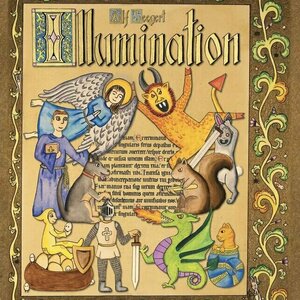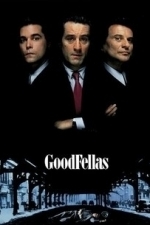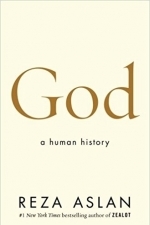
Bahamas Tourism
Travel and Navigation
App
* Universal compact app for iPhone 6 / iPhone 6 Plus / iPhone 5 / iPhone / iPod / iPad BAHAMAS...

Ubud City Guide
Travel and Navigation
App
* Universal compact app for iPhone 6 / iPhone 6 Plus / iPhone 5 / iPhone / iPod / iPad UBUD CITY...

Ho Chi Minh City Map and Walks, Full Version
Travel and Navigation
App
Lose Yourself Without Getting Lost. This handy application presents you several self-guided city...

Las Vegas City Offline Travel Guide
Travel and Navigation
App
* Universal compact app for iPhone 6 / iPhone 6 Plus / iPhone 5 / iPhone / iPod / iPad LAS VEGAS...

Trabzon City Travel Guide
Travel and Navigation
App
* Universal compact app for iPhone 6 / iPhone 6 Plus / iPhone 5 / iPhone / iPod / iPad TRABZON CITY...

La Digue Island Tourism Guide
Navigation and Travel
App
* Universal compact app for iPhone 6 / iPhone 6 Plus / iPhone 5 / iPhone / iPod / iPad LA DIGUE...

My Heart is My Own: The Life of Mary Queen of Scots
Book
A long-overdue and dramatic reinterpretation of the life of Mary, Queen of Scots by one of the...

Illumination
Tabletop Game
Illumination is a game of Mad Medieval Monks and Illuminated Manuscripts. You and your opponent...
Daniel Boyd (1066 KP) rated GoodFellas (1990) in Movies
Aug 25, 2020
Here me out here; Goodfellas is a religious story.
I know what you are thinking, “But Scorsese has already made religious movies with The Last Temptation of Christ and Silence. Goodfellas is about gangsters and murder and the only brief mention of religion in the movie is the fact that Karen is Jewish and Henry wears a cross.” Well none of that is strictly untrue, but there were just several points of the movie that I just couldn’t help but feel an implied religious undertone.
The first of which is in the opening scene of the movie, when Henry, Tommy and Jimmy open the boot of the car to finish off Billy Batts. The bright red tail light shines harshly on Henry’s face as he watches a man die and delivers his iconic voiceover: “As far back as I can remember, I’ve always wanted to be a gangster.” Here we are being introduced to a man who is capable of literally staring death in the face and metaphorically staring into the jaws of hell without even flinching.
From this point on, Henry is our guide into this forbidden underworld. He treats us the viewers as total newcomers to this chaotic landscape as he attempts to sell to us how great it is to live this way. It’s akin to Virgil guiding Dante through the various circles of hell in the Divine Comedy. This idea of Henry being a guide into hell is most explicit in the scene of his and Karen’s first real date at the Copacabana nightclub. In this scene we are treated to a glorious tracking shot that follows the couple all the way from their car to their seat directly in front of the stage. The first major direction we are taken is down. We descend down a staircase into a hallway painted red, in fact if you pay attention to the background in this entire sequence, there is almost always at least one red object onscreen. All the way to the table, Henry is greeted by various sinners as the ‘Then He Kissed Me,’ plays in the background; a song of seduction and lust.
Another example of this is the famous scene where Henry introduces us to various gangsters such as Jimmy Two Times through voiceover. Once again, the environment is littered with red light and dark shadowed areas as we are being introduced to a batch of sinners, thieves and murderers.
After Tommy’s death, the period of seduction in the movie is over. From this point on, we are seeing the intense fall of Henry’s world. It is just as chaotic as the first half of the movie, but now Henry and his friends are no longer in charge of the chaos and slowly they are beginning to lose control of everything that was once theirs. All of a sudden the momentum that has carried the movie and Henry’s life up until this point is brought to a halt, most obviously manifested in the scene of Henry driving far too fast despite being unaware of wait awaits him ahead and having to slam on his breaks and come to a screeching stop mere inches away from crashing. What direction is he looking just prior to this? He’s looking up for the chopper that he suspects has been following him, however he is also looking in the direction of Heaven, looking for a threat of something bigger than him that threatens to put a stop to his sinful lifestyle.
In the movie’s epilogue, once Henry gives up Jimmy and Paulie to the FBI, we see him in an entirely different environment. He’s dressed different, the weather is different and he describes how he is now just a nobody like everyone else as if that to him is a fate worse that death. Almost as if, he is in Limbo. No longer is he amongst the sinners in a world of gratification and sin, but instead he is in a ‘safe,’ environment where he can’t do anything even remotely illegal or morally questionable because he is being monitored by people just waiting for him to slip up. Then the very last shot we see is Tommy shooting at the audience. This is not only a very neat bookend as both the opening scene and final scene of the movie see Tommy committing a violent act, but it signifies that elements of Henry’s old life still follow him and he will spend the rest of his days looking over his shoulder for demons from his old life, like Tommy waiting to snuff him out.
Maybe I’m reaching slightly with this, but I feel like at least a few of these choices were intentionally put in by Scorsese. Especially the opening scene showing the murder of Billy Batts and the tracking shot as we are taken into the Copacabana. After watching recently watching Silence and The Irishman, it is clear that faith and mortality are both things that heavily weigh on Scorsese’s mind, so I don’t think that it is too much of a stretch to say that it was probably something that was at least in the back of his mind in 1990.
Regardless, this movie is a masterpiece and is still great no matter how many times you have seen it previously. It feels so authentic and genuine through the direction and presentation and the fantastic performances given by the respective cast members allow the characters to feel so real and deep. There is a reason that this is still considered as one of the seminal gangster movies. 10/10
Hazel (1853 KP) rated God: A Human History in Books
Nov 5, 2017
Where did religion come from? This is the question Reza Aslan, a scholar of religions, attempts to answer in his latest publication, God: A Human History. To date, Aslan has tackled subjects such as the life of Jesus of Nazareth, and the origins, evolution and future of Islam. In this book, the author journeys back to the earliest evidence of human existence and, using a mix of resources, theories and investigations, tries to determine how our ancestors conceived the idea of gods and souls. Maintaining the idea that the majority of humans think of God as a divine version of ourselves, Aslan also looks at the way our perception of life after death has altered due to the changes in our governments and cultures.
Reza Aslan claims that he, a Muslim-devout-Christian-convert-turned-Sufi, is neither trying to prove or disprove the existence of God or gods. Instead, he is providing readers with a thorough history of religion with a strong suggestion that we, as believers, have fashioned God in our image, and not the other way around.
Insisting that belief systems are inherited from each previous generation, Aslan takes a look at ancient cave drawings where he, and many other theorists, surmise that a form of religion was already well underway. Lack of written word results in a lot of speculation and hypothesis as to what these, usually animal-like, drawings represent, however, many have come to the conclusion that early humans had some form of animistic belief system.
Although not a dig at religion, after all, the author is religious himself, the following chapters bring in to question the authenticity of past and present beliefs. With reference to various psychologists, Aslan poses the theory that ancient humans may have misinterpreted dreams as evidence of a spirit realm. With no one qualified to clarify the things they did not understand, anything without a clear explanation may have been attributed to a god or gods.
As the author describes how religious ideas may have developed from these primitive beliefs to the fully detailed faiths of today, he labels the human race as anthropocentric creatures that have based their religions on human traits and emotions. By reporting in this way, it comes across that the past ideas of the soul, spiritual realms, gods and so forth could not possibly be true, yet, as the final chapters suggest, Aslan is still adamant about the existence of God.
Aslan’s narrative speeds up, finally reaching the recognizable religions of today. Beginning with the Israelites, enslaved by the Egyptians, the author explains, using biblical references, how the first successful monotheistic religion came about. However, researchers have studied the early Bible texts and are inconclusive as to whether the God worshipped by the Jews was the only divine being or whether there were others of a similar standing.
Next, Aslan explores Christianity, posing more questions than he solves, for example, is God one or is God three (i.e. the Holy Trinity)? He defines and compares the definitions of monotheism and pantheism, eventually bringing in Islam and the development of Sufism, which he is not afraid of admitting he agrees with.
God: A Human History is disappointingly short, ending with the feeble conclusion that humans are born with the ability to be convinced of the existence of a divine being and the soul, but it is our own choice to decide whether or not to believe in them. The remaining third of the book is an abundance of notes on the texts, bibliographical references, and Reza Aslan’s personal opinions about the ideas and theories mentioned in his history of religion.
Although an extensive history on the origins of religion, God: A Human History leaves readers none the wiser as to whether their belief is founded in truth or whether it is something that has evolved over time due to lack of understanding about the world. Granted, it was not the aim of the book to prove or disprove the existence of God, however, it may unintentionally sow seeds of doubt or, potentially, anger devout believers. However, there is no attempt at persuading readers to believe one thing or another, thus making it suitable for people of all religion and none.

